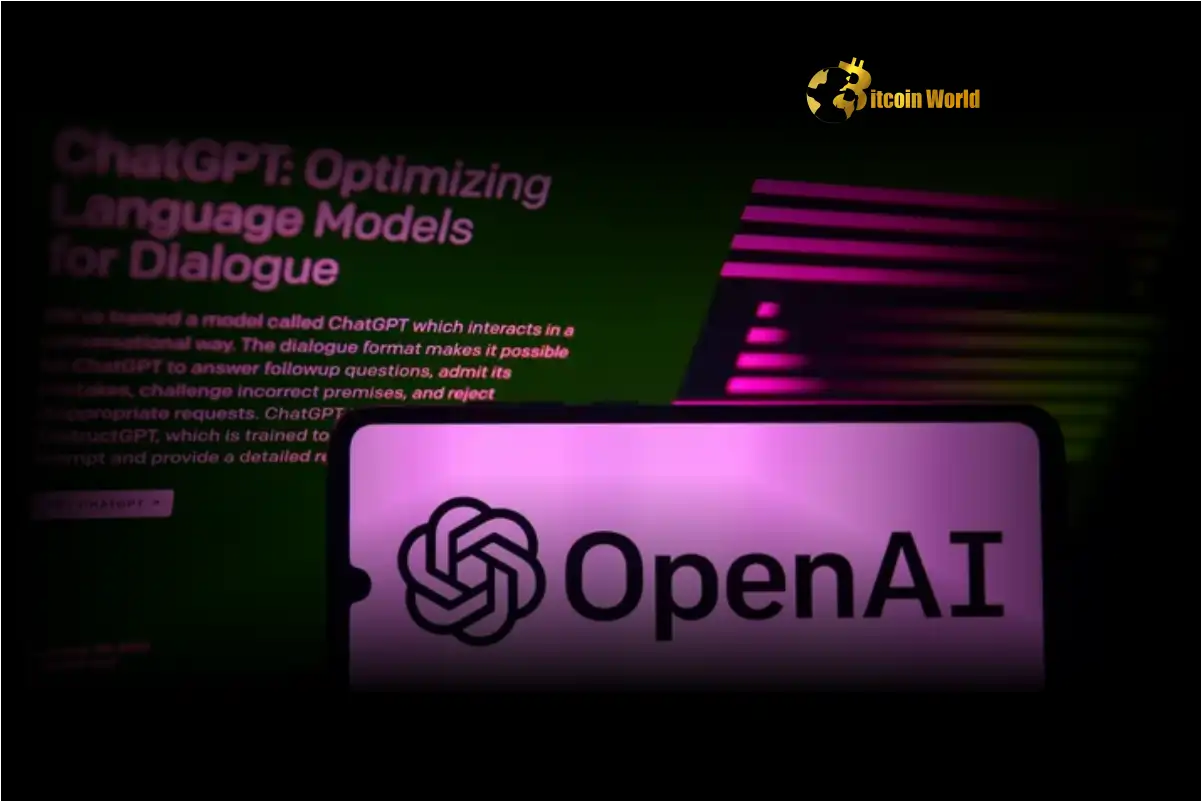Shocking AI Receipts: ChatGPT 4o’s Image Generator Unleashes Deepfake Fraud Threat
0
0

In the fast-paced world of cryptocurrency and digital finance, trust is paramount. But what happens when the very images we rely on for verification can no longer be trusted? OpenAI’s latest marvel, the ChatGPT 4o model, has unveiled a stunningly realistic AI image generator that’s raising eyebrows and sparking serious concerns. While designed to enhance creative possibilities, this powerful tool is proving to be exceptionally adept at creating incredibly convincing fake receipts. This development adds a potent new weapon to the arsenal of those seeking to exploit the digital realm, potentially ushering in a new era of sophisticated AI fraud and deepfakes.
The Dawn of Realistic AI-Generated Receipts: How Good is ChatGPT 4o?
This month marked the arrival of ChatGPT 4o, boasting a significantly improved AI image generator capable of embedding text within images with unprecedented realism. Social media quickly buzzed with demonstrations of its capabilities, but one particular application caught the attention of many: the generation of fake receipts. Deedy Das, a prominent VC and social media figure, showcased on X a fabricated receipt for a well-known San Francisco steakhouse, created entirely using ChatGPT 4o. His post highlighted a stark reality: “You can use 4o to generate fake receipts. There are too many real world verification flows that rely on ‘real images’ as proof. That era is over.”
ChatGPT 4o can generate receipts now.
You can use 4o to generate fake receipts.
There are too many real world verification flows that rely on “real images” as proof.
That era is over. pic.twitter.com/9FORS1PWsb
— Deedy (@deedydas) March 29, 2025
Others were quick to experiment, achieving similarly impressive results. Michael Gofman even refined the output, adding realistic food and drink stains to enhance the authenticity of his fake receipt, demonstrating the ease with which these AI-generated images can be manipulated to appear even more genuine.
I think in the original image the letters are too perfect and they don’t bend with the paper. They look like hovering above the paper.
Here is my attempt to make it more realistic. Let me know what you think. pic.twitter.com/EixRSHubeY
— Michael Gofman (@michaelgofman) March 29, 2025
Bitcoin World’s own investigation uncovered an even more convincing example originating from France, where a LinkedIn user showcased a crumpled, AI-generated receipt for a local restaurant chain. Intrigued, we put ChatGPT 4o to the test, successfully generating a fake receipt for an Applebee’s in San Francisco.
However, our initial attempt wasn’t flawless. Subtle giveaways, such as the use of a comma instead of a period in the total and basic math errors, hinted at its artificial origin. While Large Language Models (LLMs) still grapple with arithmetic precision, these imperfections are easily rectified. A fraudster could swiftly correct these minor discrepancies using readily available photo editing software or by refining their prompts to the AI image generator.
The Alarming Potential for AI Fraud: What are the Risks?
The ease with which realistic fake receipts can now be generated presents significant opportunities for AI fraud. Imagine the implications:
- Expense Reimbursement Scams: Bad actors could effortlessly create fake receipts to claim reimbursements for fictitious expenses, targeting businesses and organizations.
- Insurance Fraud: Altered or entirely fabricated receipts could be used to inflate insurance claims, defrauding insurance companies.
- Tax Evasion: Fake receipts could be employed to create false records for tax deductions or to mask illicit transactions.
- E-commerce Scams: Fraudulent sellers could generate fake receipts to deceive buyers into believing items have been shipped or transactions completed.
The potential for misuse is vast, and the implications for digital trust are profound. As verification processes increasingly rely on digital images, the ability to easily fabricate them undermines the integrity of these systems.
OpenAI’s Response: Creative Freedom vs. Responsible AI Development
In response to Bitcoin World’s inquiries, OpenAI spokesperson Taya Christianson stated that all images generated by ChatGPT include metadata indicating their AI origin. She added that OpenAI actively “takes action” against users violating its usage policies and is committed to “always learning” from real-world applications and user feedback.
When questioned about why ChatGPT permits the generation of fake receipts in the first place, particularly given OpenAI’s policies against fraud, Christianson explained that their “goal is to give users as much creative freedom as possible.” She suggested that AI-generated receipts could have legitimate, non-fraudulent applications, such as “teaching people about financial literacy,” creating original art, and developing product advertisements.
Navigating the Deepfake Era: Can We Still Trust Digital Images?
The rise of sophisticated AI image generators like ChatGPT 4o forces us to confront a critical question: In a world where digital images can be so easily manipulated, can we still rely on them as proof? The ability to create convincing deepfakes, including fake receipts, challenges the very foundation of digital verification. While OpenAI emphasizes creative freedom and responsible use, the potential for malicious exploitation is undeniable. As technology advances, developing robust methods for detecting and mitigating AI fraud and deepfakes becomes increasingly crucial to maintaining trust in the digital age.
To learn more about the latest AI fraud detection trends, explore our article on key developments shaping AI security features.
0
0
 Manage all your crypto, NFT and DeFi from one place
Manage all your crypto, NFT and DeFi from one placeSecurely connect the portfolio you’re using to start.


